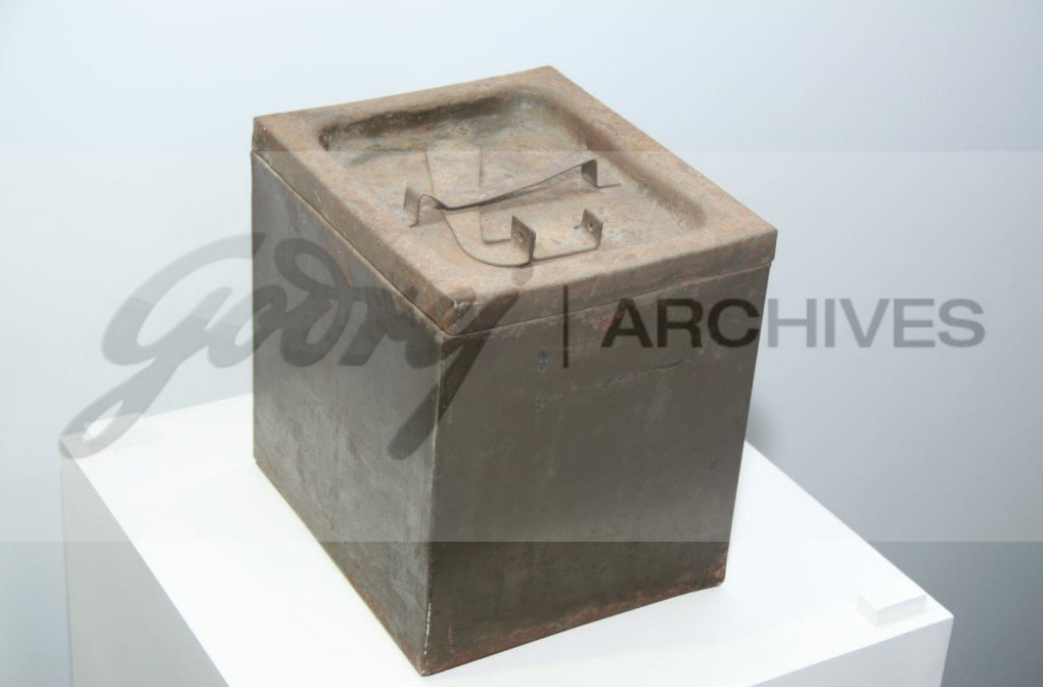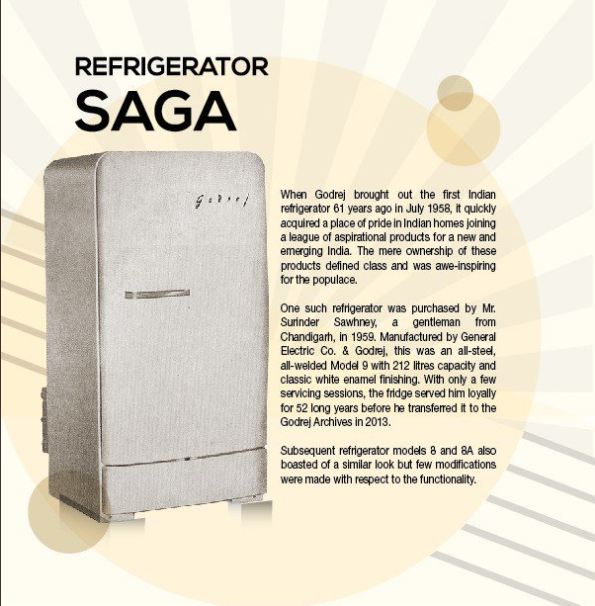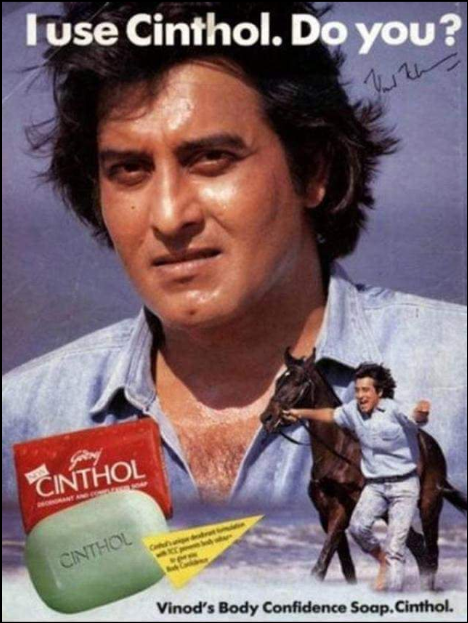#IconsOfIndia: How Godrej Introduced 5 ‘Famed Firsts’ to Modern Indian Homes!
From India’s first fireproof safe and first indigenous fridge to the world’s first soap made of vegetable oil, Godrej has laid the foundation of modern India in many ways. #History #Legacy #IconsOfIndia #SoundsOfMakingIndia

This article has been sponsored by Godrej
With its humble Swadeshi roots, very few industrial houses represent the Indian economic growth story better than the $4.15 billion global conglomerate—Godrej.
Following the incredible loot of India’s riches by colonialism, it was the likes of the Godrej Group that first helped the country get back on its feet. From manufacturing India’s first fireproof safe to its first indigenous fridge, typewriter and Chavi—the world’s first soap made of vegetable oil, this Indian powerhouse in many ways laid the foundation of modern India.
Today, the conglomerate has its fingers in a lot of pies from agriculture to aerospace, properties to personal care. Carrying the thuds, bangs and rhythms of progress, the sounds of India’s growth continues to emanate from Godrej’s factory floors. #SoundOfMakingIndia!
Moreover, it has a history of giving India many of its firsts. In this article, we tell readers about the #IconsOfIndia that Godrej made and introduced in India.
1. First springless lock
Following a few failed ventures, it was Ardeshir Godrej who set up a lock company in 1897 out of a tiny shed in Mumbai’s Lalbaugh area. The high-security Anchor locks proved popular and laid the foundation for the Godrej group known for its eponymous range of steel cupboards.
By 1902, the company began building safes as well, following which, in 1909, Ardeshir Godrej invented the springless lock for which he got a patent.
“Within this pioneering product, the controlling key worked in a stop with its teeth in reverse order of the main key, so that the lever could be raised in the correct position for shooting the bolt. This innovative product provided various levers and fittings for additional security, a feature that the regular spring-fitted lock lacked,” writes Godrej Locking Solutions and Systems.
Meanwhile, the strength, robustness and durability of its safe became world-famous in 1944, when the freighter, SS Fort Stikine exploded on the docks of Bombay (Mumbai), releasing more than half a million tonnes of debris. However, every fireproof Godrej safe in there remained untouched, alongside the pearls and papers inside them.
2. ‘Swadeshi’ Godrej Prima typewriter

By the 1940s, most typewriters were imported or assembled in India. The American manufacturer Remington and Sons dominated the market. By 1948, the idea of manufacturing indigenous typewriting machines instead of importing them took concrete shape among top executives in the Mumbai-based Godrej and Boyce.
With the first general elections coming up, however, manufacturing ballot boxes for Independent India took precedence. Eventually, in 1955, the company launched the locally-made Godrej Prima. It was also the first business enterprise in Asia to manufacture typewriters. India’s first Prime Minister Jawaharlal Nehru saw the launch of Godrej Prima as a real symbol of both an industrialised and self-reliant India. In only a few years, Godrej typewriters were found everywhere from government offices to homes.
By the 1990s, Godrej was manufacturing a third of the typewriters India needed.
3. First Ballot Box

It was on 4 July 4 1951, when Pirojshah Godrej announced the commencement of operations at Godrej and Boyce’s first factory building in the Vikhroli area of Mumbai.
On top of the agenda was manufacturing ballot boxes for the young and newly Independent India’s first general elections in 1951-1952. In 1951, the company secured an order to manufacture 900,000 ballot boxes.
“The factory was churning out more than 15,000 ballot boxes in one day. A newspaper article. . . quoted a Godrej spokesperson mention that if all the boxes (nine inches long) were put on top of each other, they would reach the height of several Mount Everests piled one on top of the other. If placed side by side, they would form a line 200 miles long,” according to this blog in the Institute for Southasian Research and Exchange.
4. First Indian-Made Fridge

Back in the 1950s, the modern fridge was affordable to only a very few Indians who wanted to keep their dairy products, veggies, and water cool.
All the brands available to Indian customers were foreign made. All this changed when Godrej and Boyce manufactured the Indian-made refrigerator in 1958 in collaboration with General Electric. Years later it would also become the first company in India to manufacture 100 per cent CFC, HCFC, and HFC-free refrigerators in India, and thus contributing their tiny bit to battle climate change.
“Godrej made an exorbitant luxury an affordable reality. The genesis lay in the concept of a ‘self-reliant India’ which Ardeshir Godrej believed in. The idea that shaped Godrej was the dream of a self-reliant India with products that could compete with the world’s best,” says a senior Godrej Appliances executives to Economic Times.
5. Cinthol Soap

In 1906, the Indian National Congress had pledged to promote indigenously-made products instead of British-made ones. By 1918, Ardeshir Godrej and his brother Pirojsha Burjorji had co-founded Godrej & Boyce manufacturing company, which would go onto launch India’s first washing soap bar in 1918.
“He (Ardeshir) went on to experiment with the idea of making toilet soaps from vegetable oils instead of animal fats as was the accepted practice in most countries since the beginning of soap manufacture,” according to the archives of the company.
By 1920, the company launched ‘No.2’, which was the first toilet soap made purely from vegetable oil. Two years later, the company launched ‘No.1’ and by 1926 emerged the Turkish bath soap. However, it was ‘Vatni’ (short for ‘Vatan se’ or ‘from the motherland’), introduced sometime between 1926 and 1932, which really took off. Wrapped in green and white packaging, the soap came with the tag line, ‘Made in India, for Indians, by Indians’
Cinthol, however, was developed with the arrival of Burjor Godrej, the son of Pirojsha. “Emphasis was laid on progressively improving qualities at decreasing costs. One of his greatest achievements was the introduction of toiletries containing G-11 or Hexachlorophene (a powdered agent used as a disinfectant in soaps) in India. He obtained a license for the exclusive use of G-11 in India for manufacturing soaps and other toilet preparations. And the result was: introduction of Cinthol in 1952,” says the Godrej archives.
Following the advent of liberalisation, it was the third generation of the Godrej family led by Adi Godrej, the son of Burjor Godrej, who took this conglomerate international. Constantly innovating its products and engaging in largely profitable mergers and acquisitions, the company today has more than 28,000 employees and has business operations in over 60 countries. If this story doesn’t encapsulate the Indian growth story, it’s hard to say what does.
(Edited by Saiqua Sultan)
Like this story? Or have something to share? Write to us: [email protected], or connect with us on Facebook and Twitter.
If you found our stories insightful, informative, or even just enjoyable, we invite you to consider making a voluntary payment to support the work we do at The Better India. Your contribution helps us continue producing quality content that educates, inspires, and drives positive change.
Choose one of the payment options below for your contribution-
By paying for the stories you value, you directly contribute to sustaining our efforts focused on making a difference in the world. Together, let’s ensure that impactful stories continue to be told and shared, enriching lives and communities alike.
Thank you for your support. Here are some frequently asked questions you might find helpful to know why you are contributing?


This story made me
-
97
-
121
-
89
-
167












